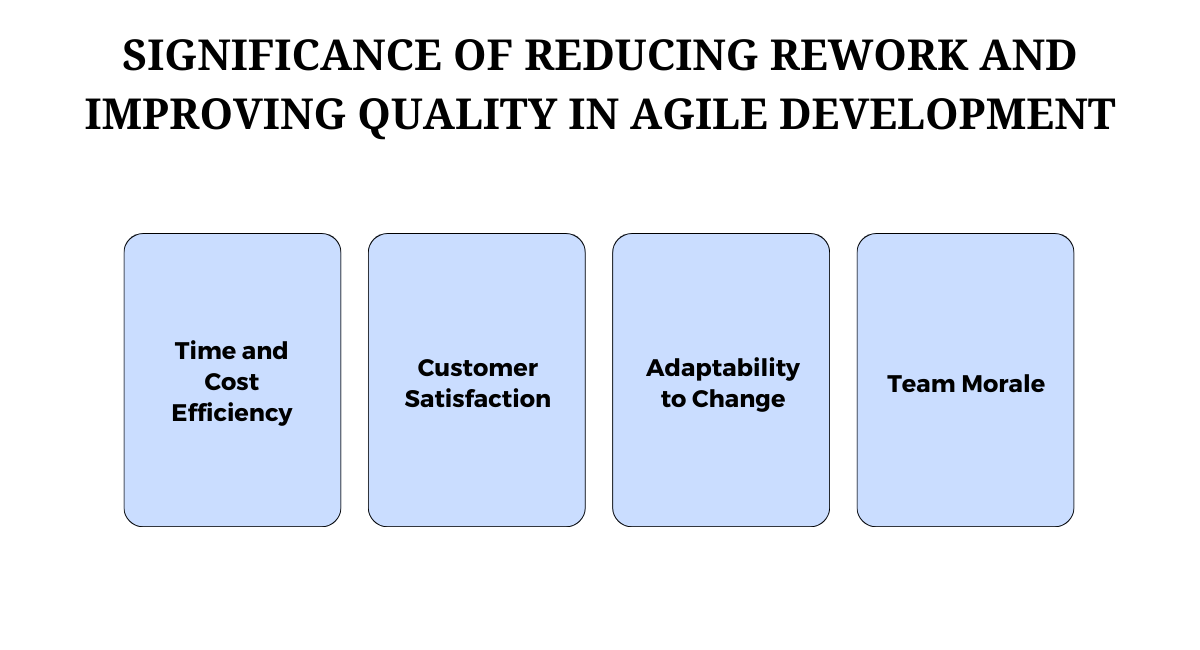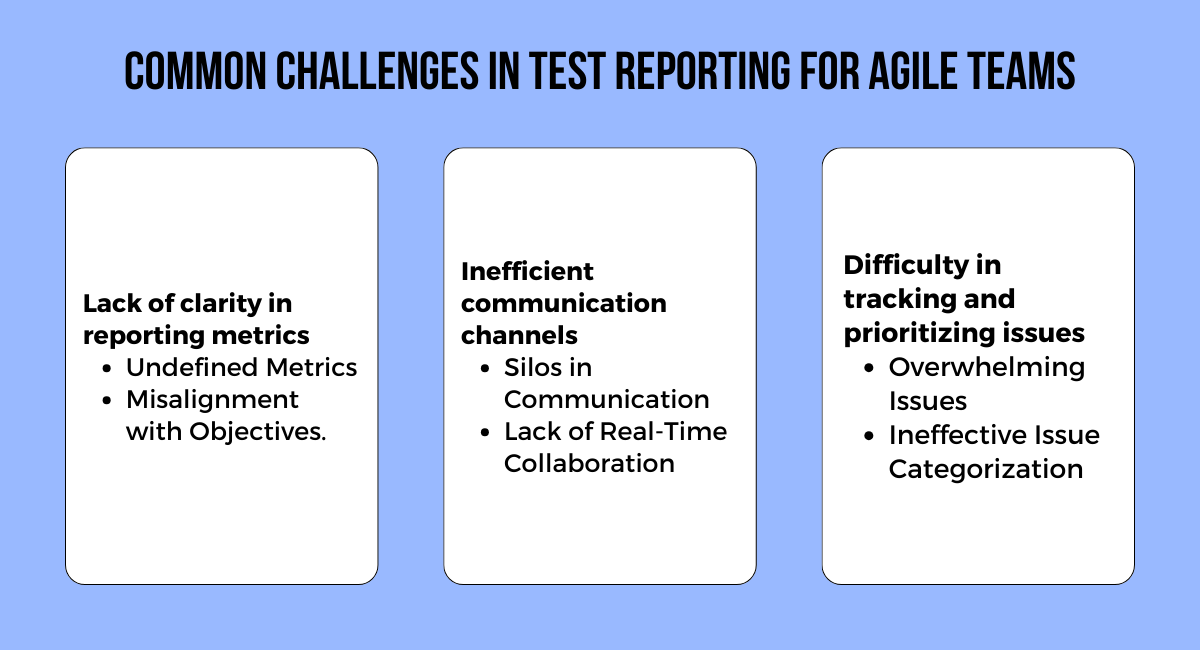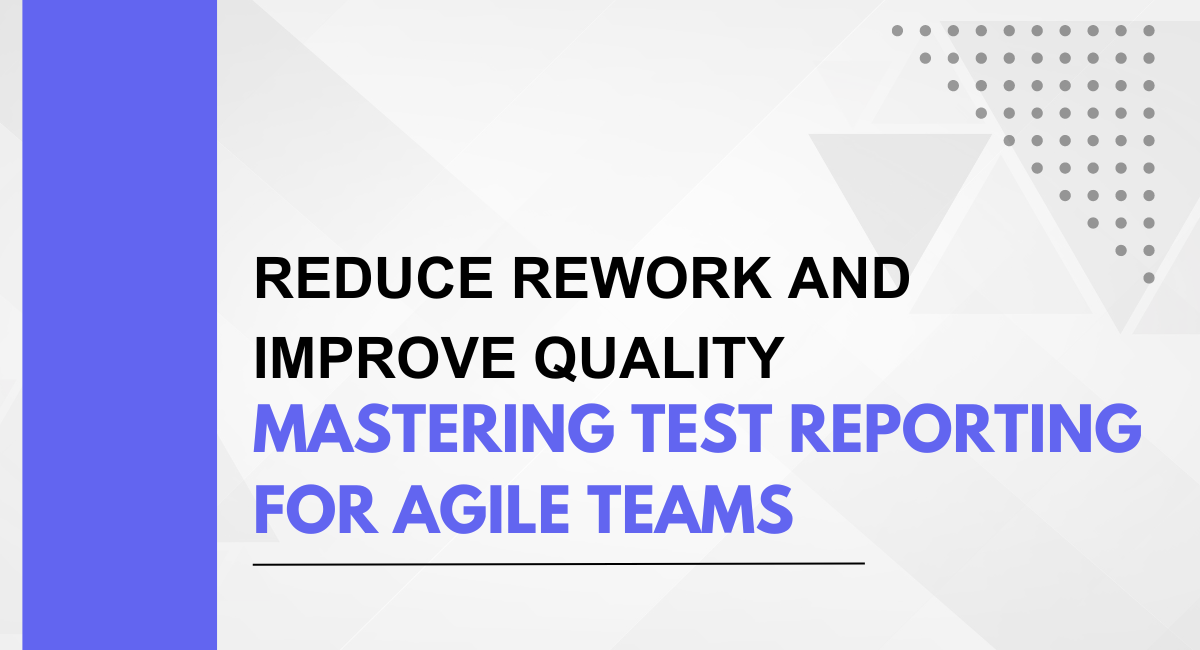Agile methodology is an iterative and incremental approach to software development that prioritizes flexibility, collaboration, and customer satisfaction. It emphasizes adaptive planning, continuous improvement, and rapid, flexible responses to change. Agile is based on the principles outlined in the Agile Manifesto and is often implemented using various frameworks such as Scrum, Kanban, or Extreme Programming (XP).
Fundamental principles of Agile include:
- Customer collaboration.
- Responding to change.
- Delivering working software frequently.
- Valuing individuals and interactions over processes and tools.
The methodology breaks down the traditional linear approach to development and focuses on delivering small, functional increments of a project in short cycles known as iterations or sprints.
Importance of effective test reporting in Agile teams

Effective test reporting is crucial in Agile teams for several reasons:
- Real-time Feedback: Agile teams work in short iterations, and timely feedback is essential. Test reporting provides insights into the quality of the software at various stages of development, enabling teams to address issues promptly.
- Transparency and Visibility: Agile promotes transparency, and test reporting provides a clear picture of the testing progress, identified defects, and overall quality. This visibility allows stakeholders to make informed decisions and prioritize work effectively.
- Continuous Improvement: Agile is built on the principles of constant improvement. Test reports help identify patterns of issues, bottlenecks, and areas for improvement in both the development and testing processes.
- Collaboration: Agile emphasizes collaboration among cross-functional teams. Test reporting facilitates communication between developers, testers, and other stakeholders by providing a common understanding of the project's current state.
Significance of reducing rework and improving quality in Agile development

- Time and Cost Efficiency: Agile development aims to deliver value quickly and frequently. Rework can significantly impact timelines and increase costs. By focusing on quality from the beginning and minimizing rework through effective testing, Agile teams can maintain a steady pace of delivery.
- Customer Satisfaction: Agile methodologies prioritize customer collaboration and responding to changing requirements. Delivering high-quality software ensures customer expectations are met, leading to greater satisfaction and the likelihood of building long-term relationships.
- Adaptability to Change: Agile teams must adapt to changing requirements and priorities. Poor quality can hinder the team's ability to respond quickly to changes, whereas focusing on improving quality enables the team to be more flexible and responsive.
- Team Morale: Constant rework and addressing quality issues can demotivate the team. By emphasizing quality in Agile development, teams can take pride in delivering reliable, well-tested software, boosting morale and overall team satisfaction.
Common Challenges in Test Reporting for Agile Teams

A. Lack of clarity in reporting metrics
- Undefined Metrics: One of the challenges in test reporting is the Lack of well-defined and agreed-upon metrics. Without clear metrics, teams may struggle to measure and communicate the effectiveness of testing efforts, hindering the overall understanding of project quality.
- Misalignment with Objectives: Test reporting should align with the goals and objectives of the project. If the chosen metrics do not reflect the project's priorities or stakeholders have different interpretations, it can lead to confusion and misinformed decision-making.
B. Inefficient communication channels
- Silos in Communication: Agile emphasizes collaboration, but if communication channels are inefficient or if information is trapped within silos, it can impede the flow of crucial testing information. Siloed communication may lead to misunderstandings and delays in issue resolution.
- Lack of Real-Time Collaboration: Agile development requires quick responses to changes, and delays in communication can hinder the team's ability to adapt. If test reporting tools and practices do not support real-time collaboration, issues may persist longer than necessary.
C. Difficulty in tracking and prioritizing issues
- Overwhelming Issues: Agile teams often work on short iterations, and many issues can be overwhelming. Difficulty tracking and prioritizing issues may lead to significant problems being overlooked or delayed, impacting the overall quality of the software.
- Ineffective Issue Categorization: Teams may struggle to address critical issues first without a transparent and standardized system for categorizing and prioritizing issues. This can result in a less effective use of resources and may impact the project's overall success.
Impact of poor reporting on project timelines and quality
- Delayed Issue Resolution: If test reporting is not efficient and transparent, issue resolution may be delayed. This can extend project timelines, especially in Agile, where quick iterations are crucial for meeting customer expectations and adapting to changing requirements.
- Compromised Software Quality: Poor reporting practices can lead to unresolved issues, compromising the overall quality of the software. This not only affects customer satisfaction but may also result in the need for extensive rework, further delaying project delivery.
- Lack of Confidence in Decision-Making: When reporting is unclear or lacks credibility, stakeholders may lack confidence in decision-making. This can hinder the ability to make informed decisions about project priorities, resource allocation, and overall project strategy.
Addressing these challenges requires a proactive approach to define clear metrics, improve communication channels, implement effective tracking mechanisms, and emphasize the importance of accurate and timely reporting in Agile teams.
Best Practices for Mastering Test Reporting
A. Encourage real-time reporting and feedback
- Implement Continuous Integration (CI) and Continuous Deployment (CD): Integrate testing into the CI/CD pipeline to enable real-time testing and immediate feedback on code changes. This helps identify and address issues early in the development process.
- Utilize Automated Testing: Leverage tools to execute tests quickly and provide instant feedback. Automated tests can be integrated into the development workflow, enhancing the speed and efficiency of the testing process.
- Establish Collaborative Platforms: Use collaborative tools that facilitate real-time communication and reporting. Platforms like Slack, Microsoft Teams, or dedicated project management tools can enhance transparency and responsiveness within the team.
B. Conduct regular retrospective meetings to improve reporting processes
- Foster a Culture of Continuous Improvement: Regularly conduct retrospective meetings to reflect on the testing and reporting processes. Encourage team members to share insights, lessons learned, and suggestions for improvement.
- Identify and Address Bottlenecks: During retrospectives, focus on identifying bottlenecks in the reporting process. Whether related to communication, tooling, or workflow, addressing these bottlenecks can lead to more efficient reporting.
- Prioritize Actionable Items: From retrospective discussions, prioritize actionable items that can be implemented in subsequent iterations. This ensures that the team actively incorporates improvements into their workflow.
C. Provide training and support for team members on effective reporting
- Training Programs: Offer training sessions on practical testing and reporting practices. This can include guidance on using reporting tools, understanding relevant metrics, and interpreting test results accurately.
- Mentorship: Facilitate mentorship programs where experienced team members can guide others in mastering test reporting. This not only helps disseminate knowledge but also fosters a collaborative learning environment.
- Documentation: Create and maintain documentation on reporting best practices. This documentation should serve as a resource for team members, especially new ones, to quickly grasp the reporting standards and expectations.
D. Emphasize the importance of continuous improvement in reporting practices
- Set Improvement Goals: Establish measurable goals for enhancing test reporting practices. These goals could include reducing the time taken for reporting, improving the accuracy of reported metrics, or increasing the efficiency of issue resolution.
- Celebrate Achievements: Acknowledge and celebrate improvements in reporting processes. Recognizing and celebrating achievements fosters a positive team culture and reinforces the importance of continuous improvement.
- Feedback Loops: Establish feedback loops within the team to regularly assess the effectiveness of reporting practices. Solicit input from team members, stakeholders, and end-users to gather diverse perspectives on how reporting can be further enhanced.
Improve Quality
Agile development is a dynamic and evolving field, and staying ahead requires a commitment to continuous learning and adaptation. Teams should embrace a culture of openness to change, actively seek opportunities for improvement, and remain informed about emerging trends and tools in Agile and software testing. As the landscape evolves, the ability to adapt and integrate new practices will contribute to the long-term success of Agile teams.
In conclusion, mastering test reporting is about achieving immediate project goals and fostering a culture of excellence, collaboration, and adaptability. As Agile principles emphasize, it's not just about following a process; it's about individuals and interactions, responding to change, and delivering value to customers consistently.
You may also be interested in Web Application Testing in 2024: Tools & Best Practices.
Book a Demo and experience ContextQA testing tool in action with a complimentary, no-obligation session tailored to your business needs.
We make it easy to start with the ContextQA tool: Start Free Trial.
